|
First of all, it's important to know all the ways grief affects you... Then, we can look at all the ways yoga is supportive...and there are many... How has it helped you? Let me know in the comments below.
*This post was written the month after the death of my Dad* When a loss happens, it's natural to want to solve it right away. To do something, anything to make it better. But staring a grief support group too early can be counter productive. These early days of grief remind me of something important. Early on, there is a tendency to move away from the reality of the loss. This is a protective response of the heart. I see this in myself. Instead of using yoga as a way to process what I'm feeling, I've been using it as a distraction. I want my practice to be sweaty and muscley and fast...not a lot of time to think or feel. This is what I need right now. It would be counter productive to the needs of my heart and spirit to force exploring emotions that I'm not ready to feel. As time passes (and there is no set timeline), and numbness wears off, you will naturally move towards the pain and realities of the loss. It's often as the numbness fades and the realities of living with loss set in, that more support is needed. It is then, that a class like Yoga for Grief Support may be helpful. In the Yoga for Grief Support program, we use yoga and meditation as a way to "go inside" and explore the pain and reality of the loss. One has to be "ready" to do this. Starting too early may feel like you are driving with one foot on the gas and one foot on the brake. In most cases (not all), it may take a number of weeks to a few months to be ready for a class like Yoga for Grief Support. Each circumstance is different, with a number of factors affecting someone's readiness. Sometimes, people start a group and realize it's too soon. That's OK too - it's impossible to know what this grief experience is like because each loss is so different. If you want to explore this further with me, feel free to reach out via email. I find the poem below, by Wendell Berry to be helpful when considering if you need specific grief support. Sometimes, it is when you don't know what to do, that you are ready to start. It may be that when we no longer know what to do November was a rough month in my world. On November 14th, after a two year illness, my Dad died. He had pulmonary fibrosis. Over the past two years, I have been mentally drafting a blog post called: When It Happens Again. IT being death and emotional trauma. I remember feeling such protest as I was considering the fact that IT could (would) happen again. A deep revolt and fear around knowing what grief is like, and not wanting to go down that path again. This mental blog post I had drafted was going to be a piece around how I would cope with grief the next time 'round, based on everything I had experience and learnt since the first time 'round. Things like:
I never did write that post. I kind of wish that I had - then I could refer back to it as a little pep talk for myself. Now that IT has happened, all the best laid plans I had mentally made, have dissolved into the cocoon of shock. I'm steeped with numbness and shock that has dulled the realities of my outer and inner world. My mind isn't working as quickly. I'm forgetful. I start 16 different tasks in a day and don't complete any of them. I didn't brush my hair or my teeth today and I have nothing to show for how busy I felt. I don't feel the protest the way I thought I would. That must have burned itself out during my dad's illness as I watched him slowly (and then quickly) decline. My anxiety is gone. I was paralyzed before his death about what was going to happen. Now it's happened and I've been relieved of that worry. That lack feels numb too. And yet, the world says speed up when everything within my body and mind says slow down. I feel this tug of war in my gut and my chest and I dread having to navigate it; It takes so much extra energy. I know the numbness and shock serves a purpose. The heart can't feel the full reality of the loss at once. It is not worth forcing myself out of this cocooned place. My wise body/mind/spirit will naturally dose itself with the pain and the reality of the loss, in it's own time. My conscious mind may not be privy to this timeline. So, what do I do? I start right where I am. I rest. I cocoon. Be gentle with myself. I've noticed more intrusive thoughts in the past few days around the circumstances of his death. This too, I know is normal. Instinctual even. There is a natural tendency to go over it all, again and again. Cognitively trying to make sense of it. While *the world* wants me to get on with living, and get back to life, I know that pausing, even going backwards into the past is important grief work. It makes the unreal real, and is an important part of processing the reality of the death. I've found myself gently approaching the pain and reality a couple of nights ago. I drove by the hospital and looked up to the window that was his room. It made my chest ache. I want to live-backwards. I want to spend some time reviewing what-the-hell-just-happened. I'll probably write it out. Get those thoughts out of my head and onto paper. I may even walk from where I would park my car, to the unit he was on, just to remember and feel it when I'm ready to. But, who knows! Grief is unpredictable, and living-in-the-moment for me at this time means responding to whatever need arises, when it does. It's all vital work. Grief work. Mourning work. I do know that this time 'round I am part of (and can rely on) a community of people who "get it" to support me and I feel all those people in my cocoon with me.
This time 'round, I'm more open to receiving care and being cared for. That feels really nice. Thank you. To those near and far, known to me and unknown. The grief warriors that live this every day. We are not alone. Sandy Before and After Loss: A Neurologist's Perspective on Loss, Grief and Our Brain by Lisa M. Shulman, MD"I expected grief to be unbearable sadness, but it wasn't that at all. It was profound instability." (preface, page xi)
The above is the quote that starts this book. I read it. Stopped. Read it again. I can relate to that, I thought.
I actually thought that many times throughout this book - which is what I liked the most. I saw myself in the pages. That, combined with the science she describes, helped me understand my own experience of grief and trauma in a much deeper way. Not only that, this book is a rabbit hole of quotable quotes and excellent references. The bibliography is pages long...a gold mine for a book worm like myself. Anyway... Lisa Shulman is a Neurologist, and this book is a memoir of her own experience with grief before her husband died, and after, as the title indicates. Her personal experience is combined with her knowledge of how the brain works to organize our reality...and in the case of grief, how it it becomes disorganized and damaged after a loss. The neurology of grief.
Before:
Lisa writes about her life with Bill (her husband) when he was sick and dying. The one thing that struck me was how their intimacy with each other was a barrier throughout his illness. "We're stumbling because we care to deeply for each other" (page 6). I found it heartbreaking to look into such an intense and personal time in their life and relationship...but, as Lisa writes later in the book, the trauma and disorientation of loss is based not only in the biology of sorrow, but the biology of intimacy. Our brains are wired a certain way because of our relationships and intimate bonds. Reading about Lisa's life with Bill before his death helps to illustrate this point in the "After" section of the book. After: There is something about how Lisa Shulman writes. It is surprising - she captures perfectly, states, emotions and thoughts that I've had, but a) haven't been able to put into words, or b) hesitant to talk about for fear of...I dunno...judgement maybe? For example, her disdain for condolence cards (I remember feeling this way) and her desire to be more a part of "the other side" with Bill, than the side of the living (yep, I've felt this too). In her words: Condolences: Hundreds were received - all unwelcome. "I'm moved when I sense the grief of others, but i envy how they touch down in my world and return to theirs. Condolences don't begin to fill the canyon of loss" (page 42). After his death: "I continue to live with Bill, in an inner world where, from moment to moment, i’m conscious of his response to the day’s events, to how my life unfolds. He continues to guide me. I was his muse; now he is mine" (page 46). *As I write this, I'm finding it hard to limit myself to just one example of a piece that "hit home" for me...* She captures a lot of the nuances of the grief experience that are irrational, heart centered and spirit based very clearly and wholly. Hence, when Lisa shifts from writing about her personal experience of grief, to one more of science and reflection on the neurology of loss I got tense. I was worried that this beautiful piece of writing was turning cold...rational...cerebral. But, in the end, it didn't at all - she was able to still be both - rational and irrational. Head and heart. Mystical and scientific. She still used her personal experience to illustrate her points, but she refers to many studies, outcomes, and sciencey things, like the neuroplasticity of the brain. The overall effect works. I was fascinated by the science that explains so much of what I experienced personally with grief. Everything from dreams to mindfulness to post-traumatic stress. I've learnt over the years that I don't need proof of anything beyond my own personal experience when it comes to grief, but it really was reassuring to understand some of the biology and neurology behind grief. “[G]rief is a manifestation of neurologic trauma, and is evidence of injury to brain regions that regulate emotions. Grieving is a healthy protective response. It’s an evolutionary adaptation to promote survival in the face of emotional trauma, one where the injury goes undetected since daily function is preserved.” (pg 142)
I found the end of the book very hopeful. She writes extensively on the science of emotional restoration and healing - from meditation to medication. She illustrates how a heightened nervous system post trauma can be tamed by periods of meditation, and warm companionship, where a healthy outcome is self-exploration and growth. She believes in both mindfulness as a way to immerse oneself in witnessing their grief, but also periods of distraction which give much needed rest.
"Since grief and loss cannot be avoided, how can we manage stress to increase our potential for growth and reduce the risk of maladaptation? Encourage the protective benefits of stress and avoid the harmful effects. Right balance of periods of distraction with periods of mindful meditation where we recall our difficulties." (page 100)
Do you know the phrase, "don't tell me how much you know, until I know how much you care"?
Well, by the end of this book I truly believe that Lisa Shulman doesn't only know about how the brain changes after a death, but she cares. “As i walk the line between my own experience of bereavement and my background in neuroscience, I confess my “scientist hat” doesn't’ always fit quite as snugly as usual. Instead, this hat is cocked to one side, leaving room for special moments that defy explanation and bring comfort” pg 101.
In summary, this is another book I'd like to add to my shelf permanently (the copy I read was from the public library). It's a book I'd refer to again and again....and, of course, to tackle that bibliography :)
Sandy And a Free Video for You!This summer, I created a poll on instagram to ask you about your experiences with savasana: Do you practice it? What's the easiest part about it? The hardest? Did it change after your loss? I got lots of replies. Here is a summary. Do you practice it? Yes and No. Some practice it regularly. Some did and don't any more. Some don't. The reasons for not include: not having the time (even though you know it helps, it's hard to make the time for it), and being fearful of what will come up during the pose (primarily emotion). For the ones that do, repeated and consistent practice was helpful in releasing chronically held tension. However, even with this knowledge, maintaining a regular practice of savasana was a challenge. What's the easiest? Some reported a feeling of relaxation: "Sinking into the earth," while other reported other things like crying or sleeping. The hardest part? Almost everyone reported the swelling of emotion or the activity in the mind being the hardest part about the pose. Finding the courage to do it was another. A couple of people mentioned the name - Corpse Pose - being disturbing enough that it was a barrier to their practice...and when the name corpse pose was used by a teacher loosely during a class, the practice became triggering, unsettling and unsafe. Did the practice of savasana change after loss? With this question I was hoping to glean information around the effect that grief had on one's ability to relax. For most, it did change after loss - in the ways mentioned above. For some, they had never practiced it before, so post-loss it was a new experience. What have I noticed as a grief-sensitive yoga teacher? In my experience, teaching yoga as a supportive practice for grief, I've noticed how important savasana and relaxation are to living with loss. So important in fact, that I weave the essesnce of savasana into the entire class. The relaxation of effort that one finds in savasana isn't only present in the last 3, 5 or 10 minutes of class, but it is part of the entire experience of yoga asana and mindfulness throughout, especially when it comes to coping with difficult states of mind and emotion. To me, savasana is an orientation to yoga. An emotional stance towards your practice. This pose embodies the nature and purpose of the entire practice. And yet, when I go to "regular" yoga classes, savasana is skimmed over, or worse, skipped completely. If it's not, the guidance is around relaxing the body, with less advice on dealing with mental tension, and usually NO advice on how to deal with emotional release during the pose...which is a very a common experience of those grieving. And so, this important pose - one that embodies the heart of yoga, and is exceptionally helpful to those experiencing ongoing states of suffering - becomes one that is avoided and misunderstood. That is why I created this video. I believe that savasana should be taught and practiced with the same depth of technique as headstand or a fancy arm balancing pose. I believe that the teaching of it should include, not only the body, but information about how to consciously relax the mind, as well as the emotions. And it's not simply "letting go" (a phrase that in its popularity has seemed to lose any real meaning). It's more about becoming deeply aware of your states of mind and emotions, and from there, working wisely with them. So, I hope you enjoy this video. The first 10 minutes are a preamble about why savasana is hard. I recommend you listen to it and take some time to reflect on how our modern and western view of relaxation has shaped your experience and ability to relax. For the practice, you will need a couple of blankets - one rolled up for behind your knees (or a bolster) and one folded for your head (or a small pillow). It may also be nice to have a blanket to cover up with. If you want to explore some of the topics I mention in this video, I have numerous blog posts on the subject: Namaste,
Sandy It was in 1637 that Descartes wrote the phrase je pense, donc je suis, which translates into “I think, therefore I am.” I can’t help but wonder if this is where we went off track. Granted, Rene Descartes was a philosopher so this phrase has more depth than what I'll write about here...but is this where, to quote Robert Frost, two roads diverged in a yellow wood? Where we started to overvalue the mind and cognition and under value the body and emotion? There was another philosopher back then, who took the opposite stance to Descartes. His name was Spinoza. Instead of seeing the mind as a reasoning machine and separate from the body as Descartes did, Spinoza thought the body and mind were one continuous being, where thoughts and feelings are foremost in the body, not the mind. “For his beliefs, Spinoza was vilified and -- for extended periods -- ignored. Descartes, on the other hand, was immortalized as a visionary. His rationalist doctrine shaped the course of modern philosophy and became part of the cultural bedrock” (1). (There is a great NY Times article about this here). Fast forward 382 years and we live in a world where are overly cerebral. We value science, logic, rationality. We need statistics, and evidence. Productivity and objectivity is a marker of success. We are basically floating heads, walking around, detached from our bodies, disconnected from feeling. We are disembodied. Dissociated. I think, therefore I am, is a concept that yogis have been addressing for years. "Yogash chitta vritti nirodhah" meaning: In other words, the true nature and purpose of yoga is to stop the constant chattering, and churning of thoughts in the mind. The yogi channels the power of the mind, the mind does not hold reign over the yogi. The method to do this is multifaceted and robust...and perhaps a topic for a different post. I probably don’t even need to write this obvious fact, but I will: We aren’t just a bunch of heads walking around. Our heads are literally attached to our bodies...(insert cheeky emoji here). In any-case, a more apt phrase worth adopting may be: I feel, therefore I am.
During her experience with cancer she would chant: "I feel, therefore I am." I think grief is similar. For me it was anyway. There was something so visceral and unignorable about how grief showed up in my body. It wasn’t a mountain bike race I could push through...it was complete surrender to a force within myself, and much greater than myself (or my mind, maybe?). Grief forced me into communion with my body. My body and my emotions had more power than my mind...but the hard part was releasing my mind from trying to do it all, and to let my body and emotions guide me. It turns out that Spinoza was right; “Feeling, it turns out, is not the enemy of reason, but, as Spinoza saw it, an indispensable accomplice,” (1) and scientists are just starting to understand it now. In Finland scientists have mapped where more than 1000 participants felt 100 different emotions in their bodies. They compiled the results to create “bodily sensation maps.” What they found was that: “even those feelings you think are all in your head still create sensations in the rest of your body." As co-author Riitta Hari put it, "We have obtained solid evidence that shows the body is involved in all types of cognitive and emotional functions. In other words, the human mind is strongly embodied."” (3) I find it so striking; the areas that light up and the areas that don’t. Our bodies speak to us constantly, through sensation, and lack thereof. We try to think our way through our losses but we can’t. We have the entire rest of our body that is trying to communicate with us... we have to FEEL. Our minds have to understand that we feel. They have to unite. Yoga is one way to do this. The practice unites the body and the mind - to be mutually respectful allies. In Yoga for Grief Support, I teach about the mind - give strategies to tame it...and explore the language of the body. If you want to learn more about the classes and groups I run, you can visit my website by clicking the links below: In person groups in Edmonton Online Program References 1. Emily Eakin, 2003. I Feel, Therefore I am. New York Times. Retrieved from: https://www.nytimes.com/2003/04/19/books/i-feel-therefore-i-am.html on December 4 2018 2. Krista Tippet,2016. Becoming Wise. Retrieved from: https://onbeing.org/programs/feel-therefore-eve-ensler/ on December 4th 2018 3. Lauri Nummenmaa, Rita Hari, Jari K. Hietanen, and Enrico Glerean, 2018. Maps of Subjective Feelings. Retrieved from: http://www.pnas.org/content/115/37/9198 December 5th 2018 Feel, Feel, Feel...
Sandy This guest post was written by Amy Ebeid On June 23, 2018, I lost my breath. One minute I was driving my two boys (8 and 6) to go see the newest Star Wars movie for their first week of summer vacation…and then a phone call…and then I was gasping for air and sobbing hysterically. My mother was diagnosed with Stage 4 lung cancer on June 23. She had an annoying cough for 6 weeks and some dizziness and then suddenly our lives completely changed. She was 69 at the time of diagnosis. The week before…we had been planning our usual weekends at the beach, discussing the boys’ schedules, gossiping about the news, and ordering matching flip-flops. It disappeared in that moment on June 23. My beautiful, non-smoking, non-drinking, only organic eating mother had over 100 nodules in her lungs and suddenly I also couldn’t breathe. The tightness in my chest and the shortness of breath (obviously massive anxiety) continued as my family fell apart and we began to try and process this diagnosis. I took my children to swim team practice and ignored their swimming as I googled words and phrases like “metastatic”, “pulmonary nodules”, “adenocarcinoma”, and “brain mets” on my phone. I blocked out the laughter at the pool and held my breath as I obsessively looked up every single statistic and research and treatment and prognosis for lung cancer that I could find. I held my breath throughout the day and ordered my eyes to stay dry as I made my boys breakfast while simultaneously texting my mom and my dad and my brother to determine the next doctor appointment, the plan of attack, any new symptoms, and on and on. I went through all the motions of motherhood, while telling my mom that she could beat this disease, and through it all…I couldn’t breathe. My kids would go to sleep at night, my role of mother would end, and the tightness in my chest would explode. I would sob to my husband, to my friends, to my brother, and to my parents. You know this kind of cry. The ugly, hysterical, loud, frantic, unable to breathe cry. I cried as the reality that my life would never ever be the same punched me in the stomach. My husband would rub my back and remind me to breathe mainly because I sounded like I was hyperventilating. And I just didn’t know how. I didn’t know how to breathe in a world where I would lose my mother to lung cancer. See...my mother was my best friend. I called her multiple times during the day, sent her funny memes and articles, watched my children absolutely adore her, planned for her and my dad to visit, and sat by her side on her porch at the oceanfront in Virginia Beach, where they lived. There was no future that didn’t include her. She was my rock. My person. Our matriarch. I knew what a diagnosis of stage 4 lung cancer meant and I couldn’t accept it. I was suffocating at the idea that eventually I would have to figure out who I was without my mother. I held my breath for the first initial weeks. I love running, but whenever I tried to run, by myself or with friends, I still couldn’t breathe and would feel like I was having a panic attack. I knew I needed exercise, so I reluctantly went to my yoga studio during the first week of July. Something quiet felt appealing. Yoga has been a part of my life since 2000. I even went through teacher training, completed my 200 hours, and taught yoga to children. It has always been a quiet form of exercise and an occasional way to calm my worries. On that particular day in July, I hid in the back corner versus my usual front and center spot. And then something amazing slowly began to happen. As my body began to flow with the music through Sun Salutation A and B…I began to breathe. I listened to the instructor’s cues of “inhale” and “exhale” and air suddenly began to move through my body. Tears mixed with my sweat as I began to cry, but I kept breathing. Slow and steady. I placed my hands on my stomach during Savasana and felt the air rise and fall. And suddenly I knew what my own treatment would need to be during my mother’s fight with lung cancer. I needed yoga to help me find my air and learn to breathe again. I went to yoga almost every single day that summer and continued my practice into the fall. During that time, my mother completed brain radiation and began chemotherapy. In September of 2018, she suddenly went into respiratory failure and was subsequently hospitalized. I continued going to yoga when I was home and if I was in the hospital with her…I remembered my practice and found a way to sit with my hands on my stomach and tell myself “Inhale, exhale. Inhale, exhale.” I sat with my mom and held her hand then called my kids and listened to their stories about their day. I went to lunch with my dad and sobbed in the car with him and then face timed my boys and laughed about their new Lego creations. Inhale. Exhale. Inhale. Exhale. I watched my mom’s chest rise and fall with the help of a high flow oxygen machine and matched it with my own breath. Inhale. Exhale. And on and on. We take it for granted. The inhale and exhale of our breath. Breathing helps you stay present. It’s how we relax our minds, lower our stress hormones, and center and ground ourselves. I couldn’t function in those early weeks of June because I forgot to breathe. I either sobbed and gasped for air or I was so desperate to not fall apart that I clamped my lips together and just shut off. My daily yoga practice was the greatest gift I found during my mom’s battle with lung cancer. It helped me survive. It helped me still be me. It helped me still connect to my kids and be their mother. It helped me even smile and laugh with friends occasionally or forget for a brief small second that I was losing the most important person in my life. And on October 23, 2018, I sat with my mom and my family in the hospital room she had been in since September, holding her hand as hard as I could, and as I cried and silently told myself ‘Inhale exhale”…I watched my mom take her last breath. It’s been almost 3 months since I lost my mom. And grief is the hardest, most painful emotion that I have had to learn to carry. It hits in the most unexpected times and I feel gutted all over again. I miss my mom more than I ever imagined I could miss a person. And still every day…I pack my bag and walk into my studio and practice yoga. My instructors know about my loss and I speak to them openly and honestly about my sadness. No pretending or faking. Yoga helps me be present. I move through my heartbreak and loss by helping my body relax and let go of its pain. I let go of my survival mode and allow myself vulnerability and to just be where I am. And at the end of each class, I lie still during Savasana and talk to my mom in my head. Inhale Exhale. Hi mom. I’m finding my way. Inhale Exhale. I miss you so much. Inhale Exhale. You were truly the best. Inhale Exhale. Maybe I will be ok. - Amy
To go in the dark with a light is to know the light.
I’ve been sinking into the darkness this December, really relishing in the long nights that mark the approach of solstice. At this time of year, the earth tilts so that the northern hemisphere is the furthest it can be from the sun, making the nights long, and they will get longer until the winter solstice, which is the longest night of the year. After the solstice the earth tilts back, nights get shorter and the days get longer, until the summer solstice, the longest day of the year. Throughout time the winter solstice has been celebrated and ritualized for the “return of light,” with hope, warmth and comfort in its wake.
Although, this post is about the dark. It is about the time before the light returns. It is the state we are in, when the light comes; but it’s not there yet. It’s dark. My obsession, nay intention, about sinking into darkness is in direct response to an internal longing for restfulness and reflectiveness that I get at this time of year...It’s also a counter move against the constant positive spin our culture puts on everything. As Wendell Berry said in the poem above, to know the dark, go dark. I’m going dark.
What about the mysterious? What about that which cannot be measured or quantified? We are forgetting that we are human beings, not a slew of numbers and statistics. We are losing our ability to be in relationship with the unknown, even though we spend most of our lives in this space.
Even within the modern culture of yoga, there is a skew towards focusing on positivity, and upward movement of the psyche towards betterment and progress. What happens to your practice when you are sorrowful and there is downward movement in your soul and psyche? That yoga, no longer fits. It’s not sustainable. Heck, even the word enlightenment gets so much more positive press than endarkenment.
I first heard of this word, endarkenment, in this 12 minute video by Joan Sutherland called The Radiance of the Dark She says that the universe is made up of 96% dark matter. 96%! That leaves only 4 % light. I found that statistic staggering, in our culture that undeniably values light (literally and metaphorically).
I watched the video a few times and every time I hear something more. It’s become one of my favourites Recently, I jotted down all the words or themes that related to darkness as I watched.I also jotted down word that related to light, for comparison sake. To explain endarkenment, I thought I’d just share my list with you.
Interesting, huh?!
We desperately need to change our relationship to the dark. Understanding the dark isn’t about looking for, or turning on the light switch, it’s about forming a relationship with the dark itself. Darkness is not a mistake. Part of the human condition is suffering...not to minimize it but to encourage you/me/us/world to understand that we are equipped to benefit from the dark. To find support there. Just like a seed draws on the cool, dark, moist soil to prepare to germinate, our inner darkness can be fertile. It needs to be included as part of our healing. Some questions for reflection... How to the words above resonate within you? What happens for you in the dark? What is your particular dream? Does your body experience endarkenment in different ways than your mind? How can you welcome that which you exclude from your life? What deep and dark currents can you rely on? How can you lay back into the mystery and unknowing? Are you willing to participate in your darkness? In Darkness, Sandy ps. I'd love to hear your thoughts and reflections. Leave a comment below! Savasana is a pose of conscious relaxation. Although many people fall asleep while practicing savasana, that is not the aim of this pose. In Light on Pranayama, B.K.S Iyengar says, “Some call it the Eternal Now, beyond space and time. Others call it the soul becoming one with the Creator. This can be experienced in perfect savasana when the body is at rest as in deep sleep, the senses as in a dream but the intellect alert and aware.”
Savasana is a restful pose, and the outcome of it is recuperation and rejuvenation. Sleep, however is not always restful, and it's possible to even wake from sleep and not feel rejuvenated. Why is this? Studies have been done that measure the brainwave activity of those people who practice conscious relaxation and found that alpha waves (slow brain waves) increase in intensity and frequency during the practice. Interestingly, in similar studies done on sleep, these alpha waves are not commonly found during sleep, or aren't an overarching and ever-present component of sleep. During sleep, the brainwave pattern changes depending on the depth and stage of sleep. Further, sleep can be un-restful due to insomnia, vivid and disturbing dreams, frequent waking etcetera, etcetera. With meditation and conscious relaxation however, the brain kind of downshifts to an idle, the alpha state, where sensory input is less, awareness is internal, and the brain is in a state of non-arousal. Alpha brainwaves are the resting state of the brain, and aid in contemplation, reflection, mental coordination, calmness, mind/body integration, learning and creativity. Practicing meditation and savasana nurture the alpha state. With regular practice, the practitioner to more easily and readily achieves the alpha state. Studies have also shown that practices that employ alpha brainwave activity may have a regulatory role on sleep, meaning that people who practice conscious relaxation and meditation, sleep more deeply and more restfully when it's time to sleep. As I've said before, savasana isn't about sleeping...but so often, people do fall asleep in savasana. If you aren't getting enough sleep, or enough restful sleep, falling asleep in savasana would make sense. My yoga teacher used to say, "if you fall asleep, you need the sleep." So true. Sleep obviously has it's benefits: physical recovery, cognitive organization, improved ability to concentrate and learn, memory, and mood regulation to name a few. But, as the buddhist saying goes: "If you walk, just walk. If you sit, just sit; but whatever you do, don't wobble" - when it's time to sleep, sleep well and when it's time to relax, relax well. As I've mentioned before, savasana is a practice. If you find you are falling asleep, try shortening the time you are in savasana. Decrease it from 10 minutes to 5 minutes to work on developing the ability of the mind to stay focused and alert without falling asleep. The more you can train your body to be still, and your mind to downshift and idle in a relaxed state, the more easily and often you will stimulate the relaxation response, thereby making it more accessible. Overtime, your ability to stay consciously relaxed in savasana will improve, and perhaps your ability to sleep deeply at bedtime will improve as well. Restfully yours, Sandy "First, learn to achieve the silence of the body. Then control the subtle movements of the breath. Next learn about the silence of the mind and the emotions and then of the intellect. From there proceed to learn and study about the silence of the Self. It is not until then that the ego or small self (ahamkara) of the practitioner can merge with his self (Atman). The fluctuations of the mind and the intellect cease, the 'I' or ego disappears and Savasana provides an experience of unalloyed bliss." - Light on Pranayama, page 233
I was in a class once, and at the end, the teacher announced it was time for savasana. She invited us all to stay in savasana for as long or as short as we would like, and then walked out of the room. The only direction she gave, was to be quiet as you were cleaning up your mat. Could you imagine doing this for any other pose in a yoga class? This story highlights the lack of attention given to savasana. Just like any other pose in yoga, savasana deserves attention. In this post, I'll go into more detail about how to do savasana, which then, you can continue to practice. (See my last post about how savasana is a practice).
Time and place
First learn to silence the body
Then, the senses (This is the fifth of the eight limbs of yoga - pratyahara - turning the senses inward).
Then control the subtle movements of the breath
Then the mind, emotion and intellect
Coming out of savasana
Taking it off the mat
Namaste, Sandy "In correct savasana there is minimum wastage of energy and maximum recuperation. It refreshes the whole being, making one dynamic and creative. It banishes fear of death and creates fearlessness. The sadhaka experiences a state of serenity and inner oneness." page 254 (Sadhaka - A seeker, an aspirant)
Reference
Light on Pranayama: The Yogic Art of Breathing by B.K.S Iyengar |
AuthorSandy Ayre Categories
All
Archives
December 2022
|
Classes
|
Helpful Info
|
|


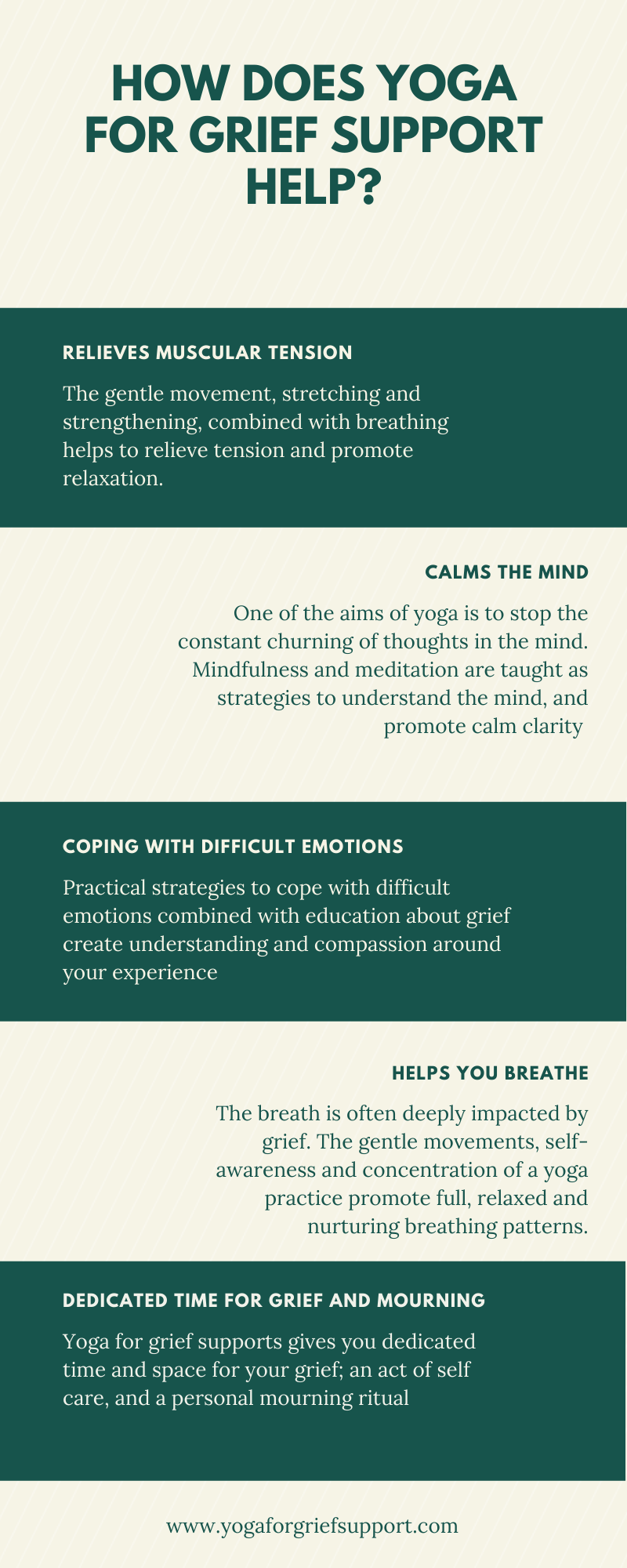
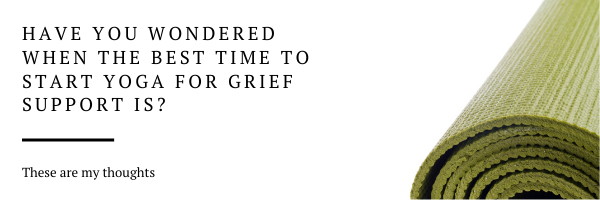
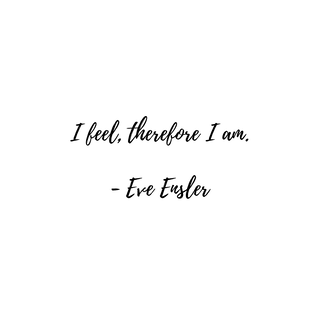
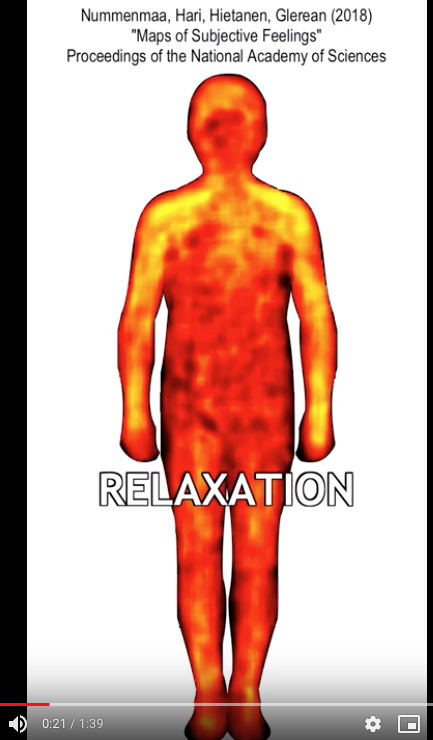
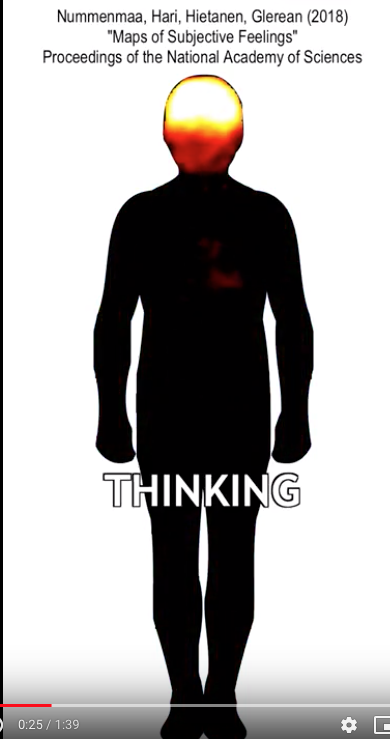
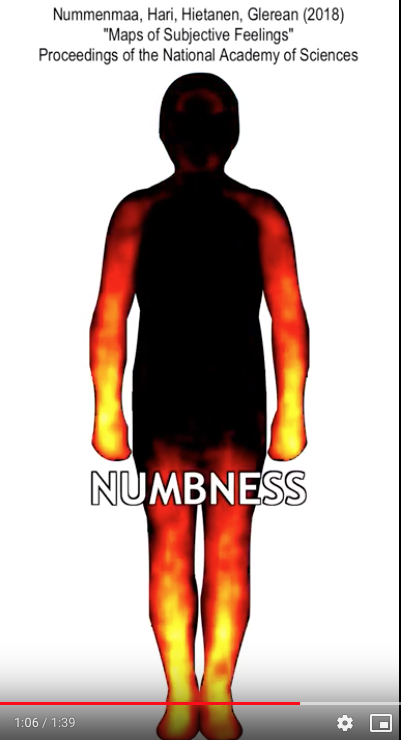
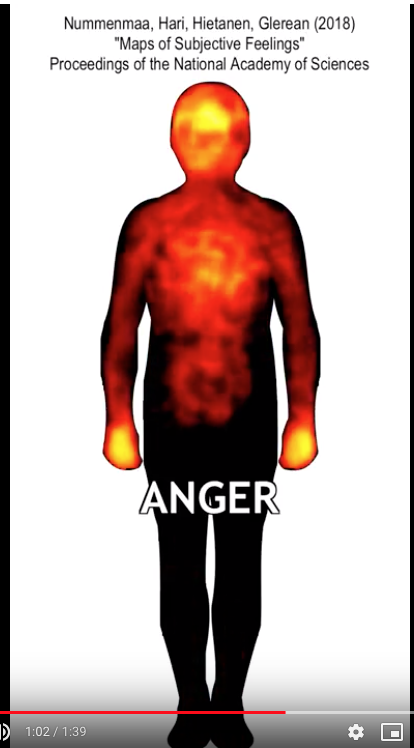
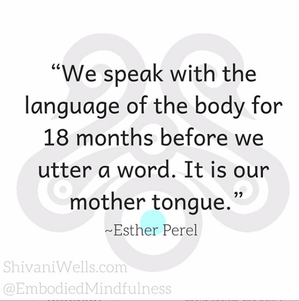
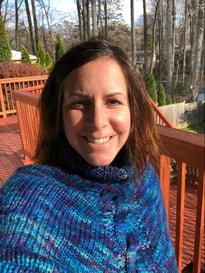



 RSS Feed
RSS Feed
